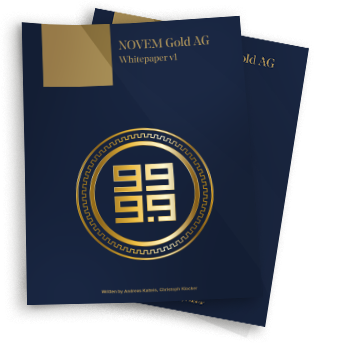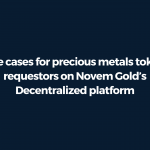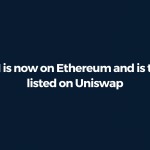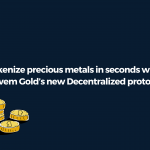
The US Federal Reserve has in the past had a coherent short-term interest rate adjustment process. From the early 80s until the 2008 financial crisis, the institution has relied on critical components for this process. It, for instance, would raise the nominal interest rate higher than the inflation rate.
The Fed would also increase the rate in response to real economic strengthening. Over time, it has been easy to infer from the average federal funds rate, what a standard rate is. As an illustration between early 1986 and 2008, the rate was 4.9 percent. The inflation rate on average during that period was 2.5 percent.
Thanks to the Great Recession, the Fed rates dropped so low, hitting an almost zero mark in 2008. It was a crisis, and that step was necessary. Unfortunately, according to Robert J. Barro, a Professor of Economics at Harvard University, the Fed rates remained at that level for too long.
The Current Fed Interest Rate Is Not High
The low-interest policy, supplemented by quantitative easing stayed on long after the economy recovered. In 2016, Janet Yellen, the former Fed Chair, placed the rate on an upward trajectory. By 2018, the rate stood at 2.4 percent under Jerome Powell.
The Paul M. Warburg Professor says:
“Throughout the period up to late 2016, the negative real federal funds rate was well below its own long-term normal. It is hard to view today’s nominal federal funds rate of 2.4 percent as high. With an inflation rate of 1.7 percent, the real federal funds rate is only 0.7 percent. And yet the Fed’s “high”-interest-rate policy was fiercely attacked by Wall Street, which regarded it as a mistake, and as the cause of the weak stock market from the end of 2018 through early 2019.”
Besides Wall Street, President Donald Trump has also been a very vocal critic of the current Fed Chair. Wall Street and the American President nonetheless have one desire in common; to have lower interest rates that stimulate the stock market.
A well-performing stock market, according to Trump, is an indicator of his excellent performance. Cutting rates, however, is not the sound economic policy the president paints it as. Earlier in the year, Jerome Powell had blown up market hopes that he would initiate rate-cutting. He had ignored the president’s criticism, and the stocks kept tumbling.
Political Figures Hand in Monetary Policy
Powell back then said that inflation was below the Fed’s 2 percent target. He also added that transient factors were holding it down. Trump, on the other hand, has insisted that the economy could grow by up to 4 percent or more if the Fed slashes fund rates. He also asked the central bank to resume its bond-buying program as it did post the 2008 crisis.
The Fed chair alarmed by the blatant directions from the White House said that the central bank remained a “nonpolitical institution.” He added, “That means we don’t think about short-term political considerations… We don’t discuss them,”
It, therefore, comes as a bit of a surprise, that the Fed has joined the rate-cutting bandwagon. While there were indications that they would put a pause on rate increases, the sudden reversal does not seem to fit within a coherent monetary policy. Powell has nevertheless justified the current rate-cutting move as consistent with the Fed’s prior policy.
The Fed chair has also said that the American economic prospects may be weaker than the strong GDP growth suggests it to be. It is highly likely that Powell is under intense external pressure to cut the rates. A good excuse, of course, is the worsening growth prospects because of the US-china trade war and overall global economic slump. It is now highly likely that the Fed under this pressure will slash rates by 100 percent come September 2019.
Fiat Currencies Are Doomed to Fail
The central bank should have enough independence to establish credit monetary policies. These policies should insulate every relevant decision-maker from influencing the said policies. This, however, has not been the case. There has been an ongoing quantitative easing, globally coordinated, that has brought debt to untenable levels.
Today, risk assets are overly reliant on almost worthless money. Rather than take appropriate corrective measures to tame this debt, governments and their central banks are printing more fiat at an astounding pace.
As an illustration, the US dollar has been in existence for 48 years as fiat. However, the first treasury printed-paper currency in 1861 was redeemable for gold, for 110 years. Then Nixon abolished the gold standard in 1971, turning the dollar into a fiat currency.
History shows that fiat currencies are doomed to fail since the 11th century, when China first established their own. They tend to lose their purchasing power, which is why humanity has relied on gold as a store of value. Gold has kept this characteristic for over 5000 years until Bitcoin came into the scene in 2008.
The Gravitation to Physical and Digital Gold as a Store of Value
Gold is increasingly outperforming bonds and stocks with an ounce now worth northwards of $1,500. In 2018, the same gold ounce was worth roughly $1,200. If the recession hits, gold’s value will skyrocket. Most investors are quickly shifting away from equities. Financial advisors advise investors to place at least 5 percent of their portfolio in gold. This will keep an investor afloat perchance the financial markets plunge further.
Meanwhile, there is an option to invest in gold. It is a time-tested store of value trusted by governments and central banks across the world. Although physical gold have limitations more so in portability, it nonetheless reliable and globally accepted. However, with the advent of blockchain technology, tokenization of the timeless asset means security and transferability, instantly solving the age-old hindrance. As such, investors seeking to diversify their portfolio, not only can they do that in mere seconds thanks to the new edge availed by digitization but token holders can liquidate the asset whenever there is a price slump lowering investment risk as a result.
New forms of money do not come around every other day. New stores of value are scarce. Salt, massive rocks or seashells have been used in centuries past, but they have failed to maintain their purchasing power. Gold whose supply stands at the $8 trillion mark globally, has so far kept this standard.
Novem Gold and the Ongoing ICO
A weakened USD is therefore suitable for every gold trader because the precious metal moves inversely to the greenback. Gold investors prosper more when the interest rates are negative. As fiat currencies with no state backing depreciate, gold not only maintains its value but rises as well.
If the dollar, for instance, were to be worthless, investors in gold would have an asset which has global value. You too can enjoy the protective nature of gold by trading in it. The precious metal can be traded in various ways. However, its trade does require the validation of its quality and ownership as well. You also would need to have measures in place that validate the amount you have in storage.
With Novem Gold by your side, you can easily access all these validation measures when investing in gold. Novem Gold is the premier global brand that empowers global citizens to transparently and safely invest in gold, the first project to do so in the NEO blockchain.
The project seeks to disrupt the trillion-dollar gold industry by leveraging blockchain technology. The NVM, a utility token, will enable the tokenization of gold. The NNN, on the other hand, offers a redeemable, gold-backed token.
These innovative blockchain projects are changing older ways of gold trading and storage. Novem Gold’s processes are not only democratizing access to gold but enabling the much-needed security in the trade as well. You will not only enjoy the ease of access to your gold investment but also have ownership of LBMA-certified physical gold.
Novem Gold is holding its Initial Coin Offering (ICO), with the first phase of crowdfunding ending on Sep 10, 2019. Every NVM token will go for €0.55, and 180 million utility tokens are awaiting your purchase.
There is an early bird offer in the first two phases of the token sales, whereby NVM will be sold at a discount. This is a grand opportunity for you to invest in assets whose value is guaranteed to appreciate with time, in these uncertain times.






